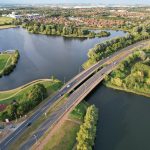- The Importance of Low-Emission Zones
- Benefits of Low-Emission Zones in Bristol
- Impact on Urban Mobility and Transportation
- Engaging the Community for Sustainable Change
- Future Prospects and Sustainability Goals
Title: Enhancing Urban Living with Low-Emission Zones in Bristol
Bristol, a vibrant city in the United Kingdom, is at the forefront of sustainable urban development with the implementation of Low-Emission Zones (LEZs). These zones are designed to improve air quality by reducing pollution levels caused by vehicles, thus creating a healthier environment for its residents. As cities worldwide strive to combat the environmental impact of transportation, Bristol’s innovative approach to creating cleaner air through LEZs sets a compelling example for smart city living.
The Importance of Low-Emission Zones
Low-Emission Zones are designated areas within a city where the most polluting vehicles, typically older diesel models, are restricted or charged for entry. These zones play a crucial role in reducing harmful emissions such as nitrogen dioxide (NO2) and particulate matter, which have been linked to respiratory problems, cardiovascular diseases, and other health issues. By implementing LEZs, Bristol aims to tackle air pollution and create a more sustainable urban environment for its residents.
Benefits of Low-Emission Zones in Bristol
The introduction of Low-Emission Zones in Bristol offers a multitude of benefits for both the city and its inhabitants. By encouraging the use of cleaner vehicles and alternative modes of transportation, LEZs contribute to lower levels of pollution, improved air quality, and a reduction in greenhouse gas emissions. This not only helps protect public health but also supports the city’s efforts to meet its environmental targets and transition towards a more sustainable future.
Impact on Urban Mobility and Transportation
One of the key aspects of Low-Emission Zones is their impact on urban mobility and transportation. By restricting access to high-emission vehicles in certain areas of the city, LEZs promote the use of public transport, cycling, walking, and electric vehicles. This shift towards cleaner and more sustainable modes of transportation not only reduces emissions but also eases traffic congestion, enhances road safety, and improves overall mobility within the city.
Engaging the Community for Sustainable Change
The success of Low-Emission Zones in Bristol relies heavily on engaging the community and promoting sustainable behavior change. Through education, awareness campaigns, and incentives, residents and businesses are encouraged to transition to greener transportation options and support the city’s efforts towards cleaner air. Collaborating with local stakeholders, policymakers, and transport authorities is essential in creating a shared vision for smart city living and ensuring the long-term success of LEZs in Bristol.
Future Prospects and Sustainability Goals
As Bristol continues to expand its Low-Emission Zones and implement further initiatives to improve air quality, the city’s commitment to sustainability and innovation remains unwavering. Looking ahead, Bristol aims to achieve even greater reductions in emissions, enhance public health outcomes, and create a more livable environment for all its residents. By embracing low-emission technologies, smart urban planning, and community engagement, Bristol paves the way for a greener, healthier future.
In conclusion, Low-Emission Zones in Bristol represent a positive step towards cleaner air, sustainable transportation, and smart city living. By prioritizing public health, environmental protection, and community involvement, Bristol sets a compelling example for other cities to follow in the quest for a more sustainable and livable urban environment. As the implementation of LEZs continues to evolve, Bristol’s dedication to fostering positive change and creating a greener future for all remains a shining beacon of urban innovation and progress.



